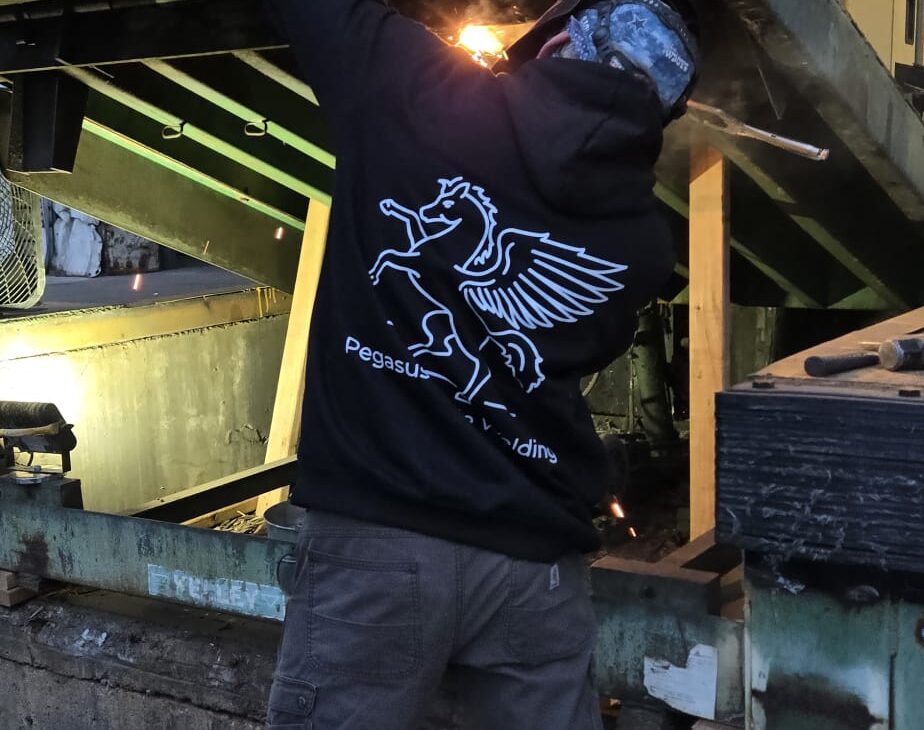The Importance of Welding in Agriculture
Agriculture relies on some of the toughest machinery in the world. Tractors, harvesters, loaders, and plows operate daily in harsh conditions, facing dirt, stone, and heavy workloads. Even the strongest components eventually wear down, crack, or break. When this happens, downtime can halt an entire farming operation. Welding is one of the most efficient ways to restore critical equipment, reduce repair costs, and extend the lifespan of expensive machinery.
Why Farm Equipment Fails
Farm machinery isn’t designed for light use—it handles thousands of hours of labor every season. Because of this, breakdowns are inevitable. Some of the most common equipment failures that require welding include:
- Plows: Constantly grinding against hard soil and rocks, plows develop cracks, bent edges, and stress fractures in mounting points.
- Buckets: Loader and excavator buckets often suffer from split seams, cracked edges, and worn cutting blades due to heavy lifting.
- Frames: Frames of tractors, trailers, and harvesters endure massive loads, vibrations, and shocks that can lead to structural cracks.
- Hitches and arms: The towing components on farm equipment are frequently under strain, leading to breaks that require strong welds to restore.
How Welding Extends Equipment Life
In many cases, a broken plow or cracked bucket doesn’t need to be replaced. Professional heavy equipment welding can restore the component to full working condition, often making it stronger than before. Reinforcing stress points, rebuilding worn edges, and sealing cracks allow equipment to continue operating without costly replacements.
Welding Techniques for Agricultural Repairs
Not all agricultural repairs are the same. Different welding methods are chosen based on the type of damage and the material being repaired:
- MIG welding: Often used for thicker sections such as bucket seams or trailer parts. It provides fast and reliable repairs.
- TIG welding: Best suited for precision work, especially when repairing aluminum or thin steel sections in agricultural machinery.
- Stick welding: A common choice for on-site repairs due to its portability and ability to handle dirty or rusty metal surfaces.
Frame Welding for Agricultural Equipment
One of the most important repairs in agriculture involves frames. A cracked or broken frame compromises the entire machine’s safety and performance. Skilled tractors frame welding restores structural integrity, ensuring that tractors, plows, and harvesters can handle heavy-duty operations without risk of collapse. In many cases, reinforcing weak points prevents further breakdowns and extends the equipment’s operational lifespan.
Restoring Plows and Buckets
Plows and buckets face some of the harshest conditions on a farm. Edges wear down quickly, seams split, and mounting brackets bend or crack. Welding allows farmers to restore cutting blades, rebuild bucket corners, and strengthen mounting points. With proper repair, these tools return to full working order, saving both time and money compared to purchasing replacements.
Custom Metal Fabrication for Agriculture
Sometimes, repair alone isn’t enough. Certain agricultural needs require custom-built solutions. Custom metal fabrication allows welders to design and build replacement parts, reinforcements, or specialized attachments tailored for unique machinery. For example, a farmer might need a reinforced plow blade or a modified bucket to suit specific soil conditions. Welding and fabrication make these solutions possible.
Preventive Maintenance Through Welding
Waiting until equipment breaks down can be costly. Preventive welding and reinforcement are often more affordable than emergency repairs. By inspecting plows, buckets, and frames regularly, farmers can catch small cracks before they turn into major failures. Proactive welding saves money, reduces downtime, and ensures reliable performance during peak farming seasons.
Common Mistakes in Agricultural Welding Repairs
Not every repair is done correctly. Some common mistakes include:
- Using improper welding techniques for the type of metal
- Failing to clean rust, dirt, or paint before welding
- Overheating thin materials, leading to further damage
- Ignoring structural reinforcements after a repair
These mistakes shorten the lifespan of repairs and can even make equipment dangerous to operate. Choosing skilled welders ensures durable, safe, and long-lasting results.


